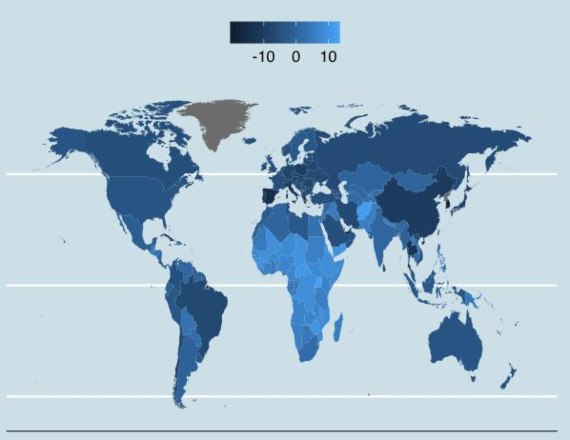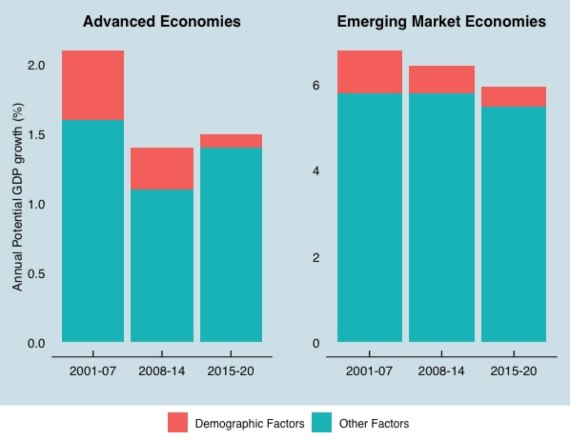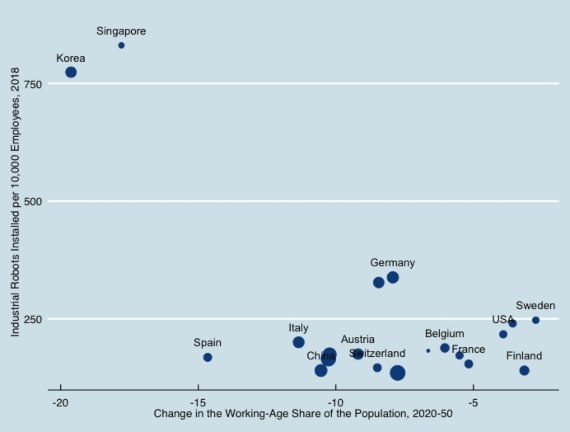Demography: The Certain Future
As Joseph Coughlin noted in a recent MIT Technology Review issue entitled “Old Age is Over if You Want It”, of all the big mega-trend challenges facing humanity in the next few decades, changing global demography is the most predictable and, at one level, the most certain. While much is now known about the scale of the challenge that humanity faces from climate change, AI, and new healthcare developments, there are still important questions about the timing and nature of these challenges. Yet, demographers are reasonably certain that we are facing big changes in our population growth rate and structure and we mostly know when and where those changes will take place.
What Are We Certain About?
This is what is most certainly “certain” about when it comes to global demographic change:
- The global population is growing more slowly and will stabilize this century. Between 1950 and 2018, average annual population growth was 1.6%. Yet, right now it is 1%. It will decline gradually over the course of this century and by 2100, it will be almost zero. The population of the earth will stabilize at around 11 billion.
- We are getting older. The share of the population over age 65 will rise from 5% in 1950 to 15% in 2050 to a quarter of the planet’s population by 2100. The year 2018 marked an epochal demographic turning point: Earth became home to more people aged 65 years and over than children under five for the first time ever.
- These trends are widespread, but there is considerable diversity across regions. This map (Fig 1) shows you the change in the size of the labor force, relative to the total population, over the next 30 years. The darker the color, the faster the aging. It will not surprise you that Europe, Japan, and the United States are on that list, but look at China, its labor market is shrinking faster than Japan. Even the major population centers of Latin America, particularly Brazil, are experiencing a shrinking share of their working-age population.
Fig 1. Change in the Working-Age Share of the Population, 2020-50 (percentage points)

Source: UN Population Division.
In fact, as the World Bank (2016) found, one way to look at this is that ageing is heavily impacting the world’s fastest growing economies: countries with shrinking labor forces contribute to 90% of today’s global economic growth. The main centers of continued population growth are in the Indian subcontinent and Sub-Saharan Africa. Of these, SSA will account for over a quarter of total population growth for the rest of this century. The portion of the world living in high income countries will fall from 32% in 1950 to 10% by 2050.
What We Are Less Certain About?
So the scale and physical location of these population changes are more or less well established, but what is less clear is whether this is a good or bad thing? For a start, we should point out that this is happening for good reasons: global life expectancy has increased from 47 to 72 years this century. Fertility rates have fallen due, in part, to higher rates of labor force participation by women in advanced economies and lower rates of maternal and infant mortality in developing economies.
Now on the positives side, a knowledge well in advance that we will have a pool of 1.2 billion humans aged over 65 versus around 700,000 today means that products and services can be tailored for the preferences and income profile of this demographic. Evolving demographic trends will fundamentally change the nature of what is demanded in advanced and developing economies, with implications for types of goods and services demanded as well as the flow of labor and capital. Businesses and governments need to ask themselves whether they are well positioned to take advantage of these changes. Research by the MIT AgeLab suggests that there is already a big gap between producer and consumer expectations (Coughlin 2019).
Yet, it creates new potential headwinds as well as opportunities. Whether demographics slows economic growth will come down to technology and our ability to generate more output and ideas with less labor. The contribution of demographics to economic growth (Fig 2) has fallen rapidly in recent years and if one drew out a linear extrapolation of these trends, it will soon become a drag on potential growth.
Fig 2. Contributions to Potential Growth in Advanced vs. Emerging Markets, 2001-20

The emergence of this drag is not certain though it does frame new challenges:
- One challenge is that fewer workers may mean that the possibilities for ideas generation, the ultimate driver of productivity growth, may be more limited. The answer, to paraphrase Paul Romer, is we need more discoverers (i.e., scientists) and we need to up the productivity of scientific research.
- Demographics may drive automation, even to areas that are not ageing that quickly. A paper by Acemoglu and Restrepo (2018) reported that the impact of demographics on productivity is ambiguous because automation is already higher in sectors more amendable to it and in older countries: industrial robots per 1,000 industrial workers is 9.14 in the U.S., 14.2 in Japan and 20.1 in Korea (Fig 3). Yet, as aging economies manufacture robots and export them, these technologies may substitute for labor even in countries that still have a growing working force.
These developments do not imply a doomsday scenario by any means, but it does require re-thinking the way that we manage our spending, investments, and strategies for the future.
Fig 3. Relationship between Aging and Automation

Source: UN Population Division and International Federation of Robotics.
References
Acemoglu, Daron and Pascual Restrepo (2018) “Demographics and Automation,” NBER Working Paper No. 24421.
Coughlin, Joseph F. (2019) “How old age was invented,” MIT Technology Review, Vol. 112, No. 5, Sep/Oct.
World Bank (2016) Global Monitoring Report 2015/2016: Development Goals in an Era of Demographic Change.
Comments on this publication